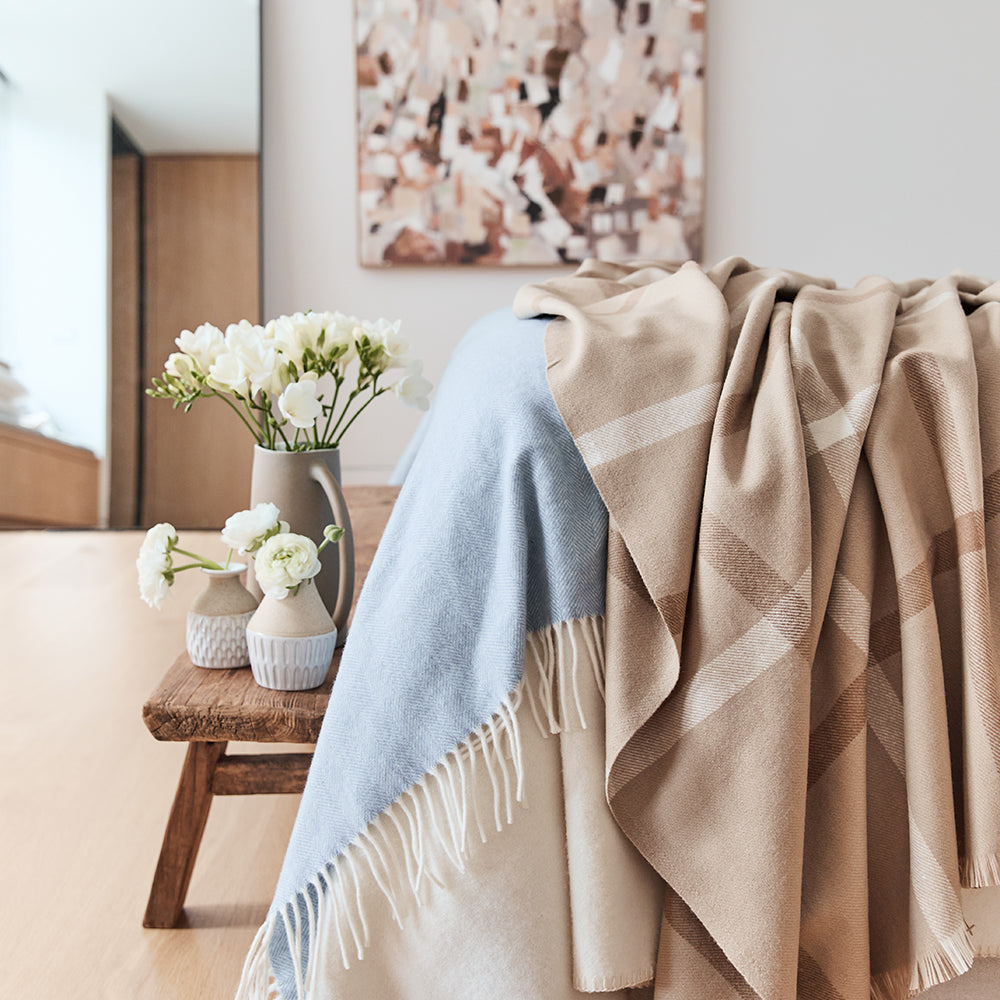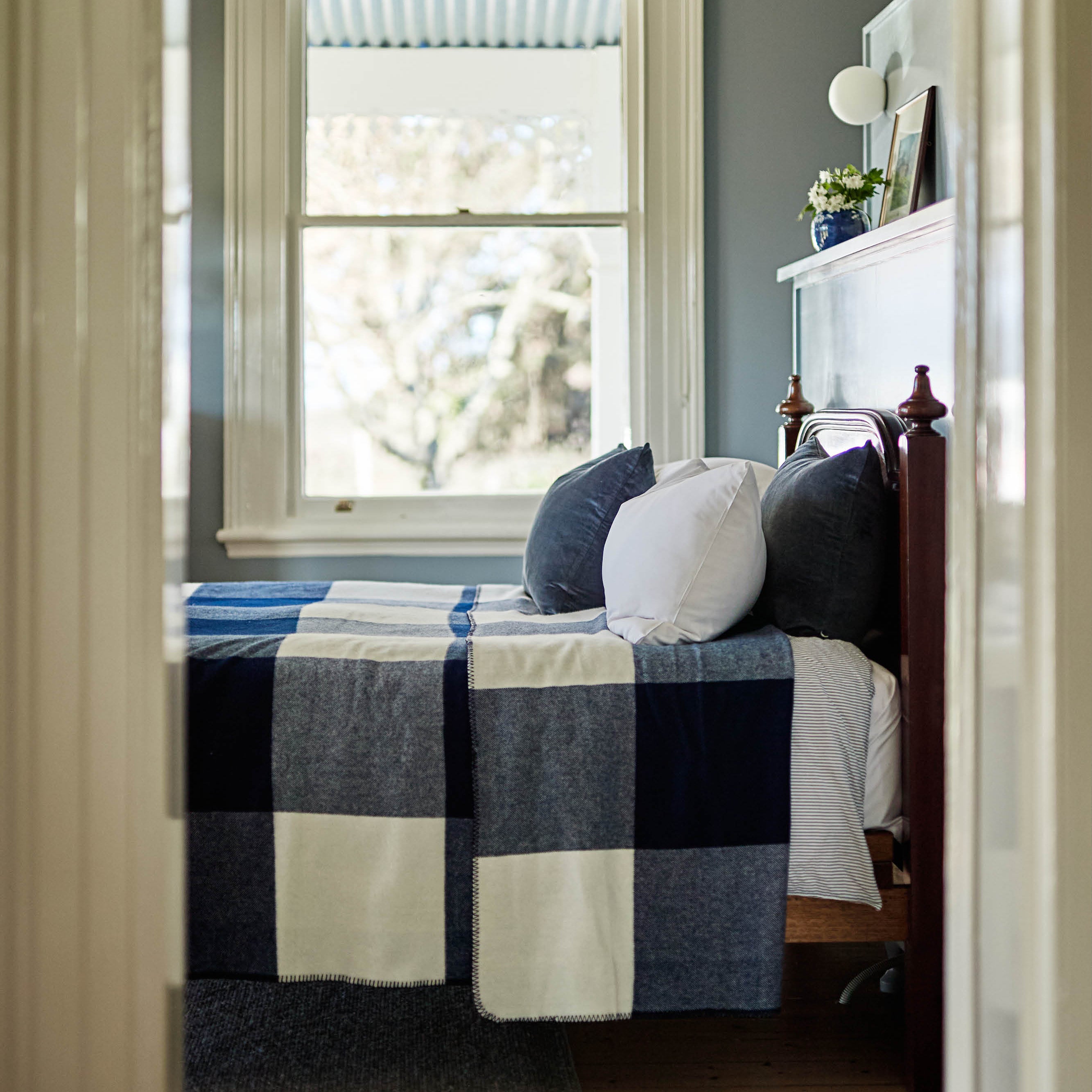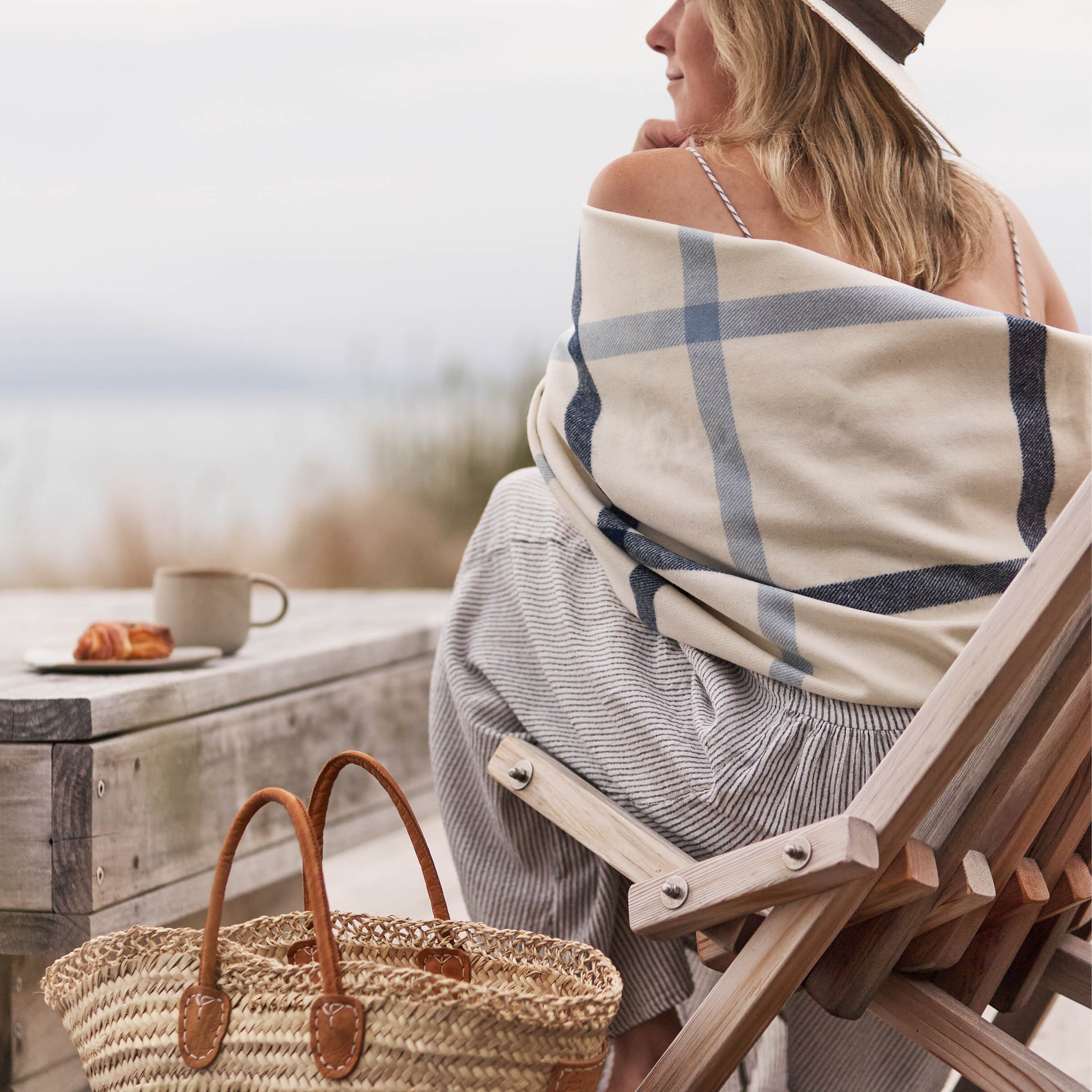Keeping it local
Do you feel great knowing that your clothes and homewares are made locally from local materials? We like it because we can be sure that we’re buying high quality and durable products. And we love that we’re supporting a local business!
At Waverley we source our materials as locally as they come: one of our Merino suppliers, Kananga Grazing, is an hour and a half from the mill. Recently the Waverley Mills team made the trip up to Kananga Grazing to meet the owner Roger Bignell and to learn about just how much hard work goes into the Merino breeding process. Needless to say, we were pretty impressed!
Setting the scene
WM: How often are the sheep sheared?
R: We shear them every 12 months.
WM: Is there a certain age you start shearing them from? Do you shear lambs?
R: Yes, you do shear them as lambs, that’s the first shearing when they haven’t got 12 months of wool on them. It’s super soft.
WM: Your family owned farmland in Bothwell, is that right? Is there a long history in that area?
R: Yes, that’s right. We have been farming sheep for generations basically, since 1825. I think we’re four generations of sheep farmers now.
WM: Shearing is seasonal work, how long do you have shearers with you for?
R: So they’ll [the shearers] come here for three weeks and we’ll shear for that time.
WM: What type of people are shearers?
R: Most of our team is young and we have a female shearer.
WM: That’s impressive, a female shearer in what I imagine is quite a male dominated industry?
R: Yes, she’s a champion, a really well spoken girl and a good smart cookie. I often say to her you’re doing a brilliant job. Just encourage as much as you can.
WM: Do you help shear? Or are there other jobs to carry out?
R: No not shear, my job is on the wool table. As each fleece is finished, the roustabout, he or she will pick up the fleece and they’ll throw it out on the wool table. Then the classer will be working one side and I’ll work the other and we skirt it, that means taking off all the dirty fribs and any other things you don’t like. Then the classer has to decide what bin it has to go in depending on a range of characteristics, its visual micron characteristics, its colour, they try to estimate fine or strong, length has a big bearing on it, so they’ll class it into one of many bins.
WM: What would you say is the most difficult role in the shearing process?
R: Physically, shearing is very difficult!
WM: Can you describe to me what goes on in the shearing shed?
R: It’s a busy, busy, process – everyone’s running, you’re actually looking for time, you’re never sort of thinking ‘oh times are going pretty slowly’. Usually on that wool table you’re rushing trying to keep up, so there’s never a dull moment. You’re sort of thinking ‘aww we might be able to catch up, we’re closer to catching up!’ and everyone’s running.
WM: What’s your favourite part of the process?
R: I just enjoy being in the shearing shed with wool, which I just love. I love being part of the process, as it’s the final product of a year’s work and all year you’ve been breeding the sheep, looking after them health-wise, and shearing is the end product of all that effort. So it’s coming into fruition. Then you’re pressing it up and you’ve got a big shed full of it.
WM: Do you feel like it’s worthwhile?
R: Yes absolutely. To look around in the wool bins and think… you really appreciate what you’ve been doing then.
WM: What is it that you love about wool? Is there a specific type you like?
R: It’s probably the finer type wool, which this is.



